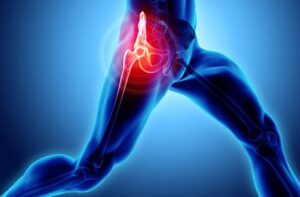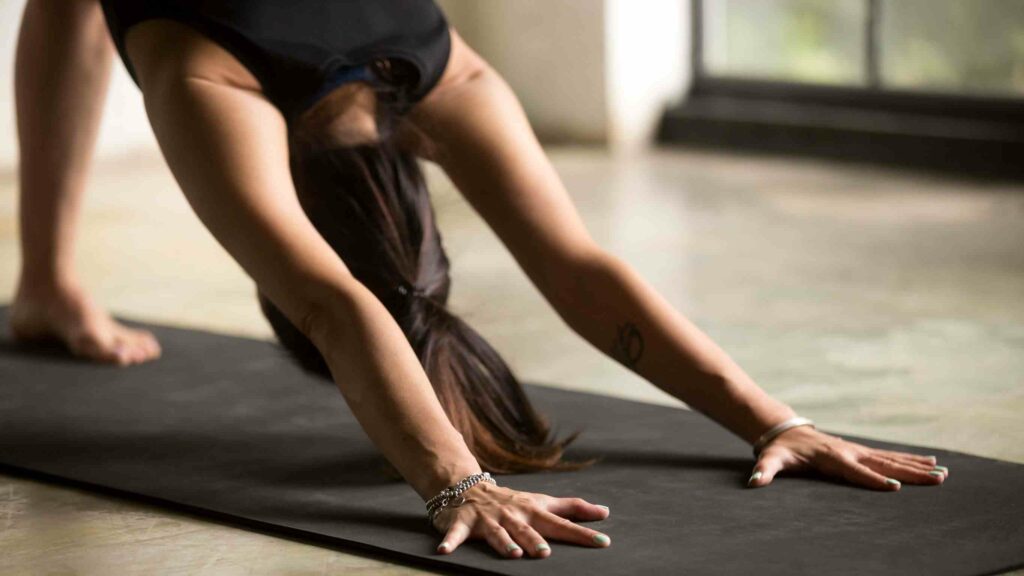Pain in the hip flexors and back is a common complaint among people of various age groups. Understanding the intricacies of hip flexor and back pain is essential not only for those who suffer from it but also for those who wish to prevent it. In this guide, we will explore the causes, symptoms, and innovative treatments of hip flexor and back pain. By delving into expert insights and cutting-edge therapies, we aim to provide you with practical and effective strategies to regain your mobility and live pain-free.
Contents
Can Hip Flexors Cause Back Pain?
 Yes, tight or injured hip flexors can indeed contribute to back pain. Here’s how:
Yes, tight or injured hip flexors can indeed contribute to back pain. Here’s how:
- Muscle Imbalance
The hip flexors are a group of muscles located in the front of the hip. When they become tight or imbalanced, they can pull the pelvis forward into an anterior tilt. This tilting can lead to an increased curve in the lower back (lumbar spine), creating excess pressure on the vertebrae and surrounding muscles.
- Altered Movement Patterns
Tight hip flexors can limit the range of motion in the hip joint. This restriction may force other parts of the body, such as the lower back, to compensate by moving more or in unnatural ways. Over time, this altered movement pattern can lead to strain or discomfort in the back.
- Postural Issues
Chronic tightness in the hip flexors often leads to poor posture, particularly when standing or sitting for extended periods. This poor posture can cause misalignment in the spine and contribute to or exacerbate back pain.
- Connection to Other Muscles
The body’s muscles are interconnected, and issues in one area can affect others. Tight hip flexors can influence the alignment and tension in neighboring muscles. Such as the glutes and lower back muscles, creating a chain reaction of discomfort or pain.
- Specific Conditions
In some cases, conditions like hip flexor strains or tendinitis can lead to referred pain in the back. Referred pain occurs when discomfort is felt in a location other than the source of the pain. This can make diagnosis more complex.
The relationship between hip flexors and back pain highlights the importance of a holistic approach to physical health. Addressing hip flexor tightness through targeted stretching, strengthening exercises, and possibly professional physical therapy can often alleviate related back pain.
What Are The Symptoms Of Hip Flexor And Back Pain?
Hip flexor and back pain can manifest in various ways, and the symptoms may differ depending on the underlying cause. Here’s a breakdown of the common symptoms for both:
1. Hip Flexor Pain Symptoms:
- Pain in the Front Hip Area: This pain can be sharp during certain movements or a dull ache at rest.
- Limited Range of Motion: Difficulty lifting the knee towards the chest or moving the leg forward and backward.
- Stiffness: The hip may feel tight or stiff, especially after prolonged sitting or sleeping.
- Swelling and Tenderness: In more severe cases, like a strain or tear, there may be swelling or tenderness to the touch.
- Weakness: Feeling of weakness in the hip area, especially during activities that engage the hip flexors, like running or climbing stairs.
2. Back Pain Symptoms:
- Localized Pain: Pain that is specific to one area of the back, often in the lower back. It may be a persistent ache or a sudden sharp pain.
- Radiating Pain: Pain that spreads to other areas such as the buttocks, thighs, or even down to the legs, possibly indicating nerve involvement.
- Stiffness and Limited Mobility: Difficulty bending or twisting the back, often accompanied by muscle spasms.
- Numbness or Tingling: These sensations in the back, buttocks, or legs may indicate a nerve compression issue like sciatica.
- Chronic or Intermittent Pain: Some experience continuous pain, while others may have episodes of pain that come and go.
3. Symptoms That May Indicate Both Hip Flexor and Back Pain:
- Altered Gait or Posture: Changes in the way a person walks or stands may result from both hip and back issues, leading to discomfort in both areas.
- Referred Pain: Pain in the hip might be referred to the back or vice versa, making it challenging to pinpoint the exact location of the discomfort.
- Functional Limitations: Difficulty in daily activities like bending over, sitting, or walking long distances can be indicative of problems in both the hip and back.
It’s essential to consult with a healthcare provider or physical therapist to accurately diagnose the cause of the symptoms. Only then, the treatment can then be tailored to address the specific issue.
How Do You Relieve Hip Flexor Back Pain?
 Relieving hip flexor and back pain can often be achieved through targeted exercises and stretches. Here’s a guide to some helpful practices. But it’s always recommended to consult with a physical therapist or healthcare provider to ensure these exercises are suitable for your specific condition.
Relieving hip flexor and back pain can often be achieved through targeted exercises and stretches. Here’s a guide to some helpful practices. But it’s always recommended to consult with a physical therapist or healthcare provider to ensure these exercises are suitable for your specific condition.
Exercises to Strengthen
1. Bridges:
- Lie on your back with your knees bent and feet flat on the floor.
- Squeeze your glutes and lift your hips towards the ceiling.
- Hold for a few seconds, then lower back down.
- Repeat 10-15 times.
2. Planks:
- Hold a plank position, either on your hands or forearms.
- Keep your body in a straight line from head to heels.
- Hold for 20-30 seconds, working up to a minute.
3. Hip Flexor Strengthening:
- Stand and lift one knee towards your chest, then lower.
- Repeat 10-15 times on each side.
4. Bird-Dog:
- Start on hands and knees.
- Extend one arm and the opposite leg, keeping them in line with the body.
- Hold for a few seconds, then switch sides.
- Repeat 10-15 times.
Stretches to Improve Flexibility
1. Hip Flexor Stretch:
- Start in a lunge position with one foot forward.
- Gently push your hips forward until you feel a stretch in the front of the hip.
- Hold for 20-30 seconds, then switch sides.
2. Child’s Pose:
- Start on your hands and knees, then sit back onto your heels.
- Reach your arms forward and relax your back.
- Hold for 20-30 seconds.
3. Hamstring Stretch:
- Sit with one leg extended, and the other bent with the foot against the inner thigh of the extended leg.
- Reach towards the toes of the extended leg, keeping your back straight.
- Hold for 20-30 seconds, then switch sides.
4. Piriformis Stretch:
- Lie on your back with both knees bent.
- Cross one ankle over the opposite knee.
- Gently pull the uncrossed leg towards your chest until you feel a stretch in the hip.
- Hold for 20-30 seconds, then switch sides.
Additional Considerations
- Warm-up Properly: Always start with a gentle warm-up like walking or light jogging to prepare the muscles.
- Maintain Good Posture: Focus on keeping proper alignment during exercises to prevent further strain.
- Avoid Overstretching: Stretch to the point of mild tension, not pain.
- Consistency: Regularly incorporating these exercises and stretches into your routine can aid in ongoing relief.
- Consult a Professional: A physical therapist can create a personalized program that takes into consideration your unique situation and needs.
These exercises and stretches aim to build strength, increase flexibility, and promote better alignment. All of which can contribute to relieving hip flexor and back pain.
When Should You Seek Medical Attention?
 While mild hip flexor and back pain can often be managed with home remedies and exercises. Still, there are situations where medical attention is essential. Seeking professional help from a healthcare provider is crucial when:
While mild hip flexor and back pain can often be managed with home remedies and exercises. Still, there are situations where medical attention is essential. Seeking professional help from a healthcare provider is crucial when:
- Severe Pain: Intense or sharp pain that limits daily activities or affects sleep needs professional assessment.
- Trauma or Injury: If the pain is a result of a fall, accident, or sudden injury, immediate medical attention is needed to rule out fractures or other serious conditions.
- Associated Symptoms: Fever, unexplained weight loss, or other unusual symptoms accompanying the pain could indicate an underlying health condition.
- Failure of Home Treatment: If you’ve been following exercises, stretches, and over-the-counter pain relievers without relief, a healthcare provider can offer a more tailored approach.
- Functional Limitations: Difficulty with basic functions like standing, walking, or performing daily tasks warrants medical attention to prevent further disability.
- History of Medical Conditions: If you have a history of chronic conditions, such as arthritis or osteoporosis, it’s wise to consult with a healthcare provider early, as the pain may be related to these underlying conditions.
Professionals to Consider
- Primary Care Physician: Often the first point of contact, they can assess your symptoms and refer you to a specialist if needed.
- Physical Therapist: Specializing in movement and rehabilitation, they can create a personalized treatment plan.
- Orthopedic Specialist: If the pain is related to the bones or joints, an orthopedic doctor can provide specialized care.
- Chiropractor: For alignment issues, a chiropractor may offer treatment options.
Remember, it’s always better to err on the side of caution. Even if the symptoms seem minor, consulting with a healthcare provider can lead to an accurate diagnosis and appropriate treatment, potentially preventing further complications.
Conclusion
In conclusion, hip flexor and back pain can be a debilitating combination that affects many individuals across various age groups and lifestyles. The intricate relationship between these two areas requires a comprehensive understanding of the symptoms, causes, and appropriate management strategies. Through mindful awareness, targeted exercises, stretching, and a proactive approach to self-care, many can find relief.
However, recognizing when professional medical intervention is necessary is vital to ensuring proper diagnosis and treatment. This guide offers a pathway towards a more pain-free and mobile life, connecting you with both at-home solutions and professional care. If you’re experiencing Hip pain, physical therapy for hip pain at PhysioMantra can help: Book an online physical therapy session.



